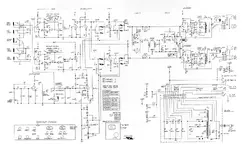D
drtechno
Active member
ok I'll help you troubleshoot your amp.
without looking back to try to find out what this guitar amp is, 80% of them are push pull with some more or less bells and stuff.
ok lets first divide and conqure:
the output stage of your amp will have big tubes (usually 2 or 4)
the stage behind that one is the phase splitter. it takes the unbalanced connection from the preamp and buffer it, the result output is a buffered balanced connection. remove this tube with the power off.
it will be a small signal tube like a 12ax7, 12au7, 12at7, 6sn7....
anyways, power on:
does it buzz after the heaters warm up the tubes? if so, we need to look at that buzzing issue before we go any further.
without looking back to try to find out what this guitar amp is, 80% of them are push pull with some more or less bells and stuff.
ok lets first divide and conqure:
the output stage of your amp will have big tubes (usually 2 or 4)
the stage behind that one is the phase splitter. it takes the unbalanced connection from the preamp and buffer it, the result output is a buffered balanced connection. remove this tube with the power off.
it will be a small signal tube like a 12ax7, 12au7, 12at7, 6sn7....
anyways, power on:
does it buzz after the heaters warm up the tubes? if so, we need to look at that buzzing issue before we go any further.


